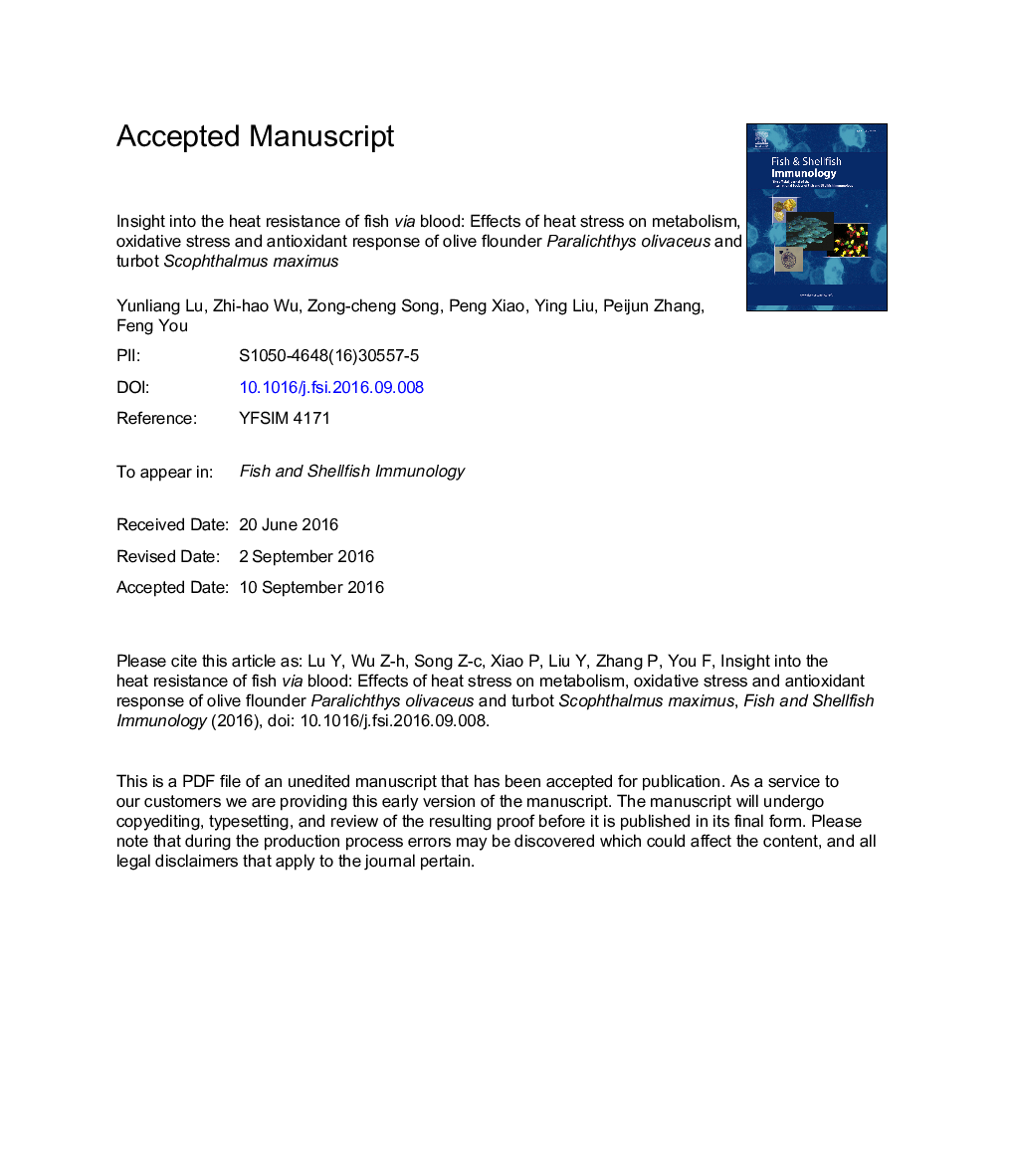| کد مقاله | کد نشریه | سال انتشار | مقاله انگلیسی | نسخه تمام متن |
|---|---|---|---|---|
| 5540600 | 1553616 | 2016 | 31 صفحه PDF | دانلود رایگان |
عنوان انگلیسی مقاله ISI
Insight into the heat resistance of fish via blood: Effects of heat stress on metabolism, oxidative stress and antioxidant response of olive flounder Paralichthys olivaceus and turbot Scophthalmus maximus
دانلود مقاله + سفارش ترجمه
دانلود مقاله ISI انگلیسی
رایگان برای ایرانیان
کلمات کلیدی
موضوعات مرتبط
علوم زیستی و بیوفناوری
علوم کشاورزی و بیولوژیک
علوم آبزیان
پیش نمایش صفحه اول مقاله

چکیده انگلیسی
High temperature has direct confinement on fish survival and growth, especially under the background of global warming. Selection of fish line with heat resistance is an important means to address this problem. In the present study, we analyzed the difference in heat resistance between families of olive flounder Paralichthys olivaceus and turbot Scophthalmus maximus, two flatfish species occupying slightly different thermal niches. Then the chosen families were tested to determine their differential response to heat stress (ÎT = +8 °C and +12 °C) in blood, including anaerobic metabolism (lactate), oxidative stress (lipid peroxidation and protein carbonylation) and antioxidant enzymes. Results showed a difference in heat resistance between families of the two species. Among the chosen parameters, growth traits had a significant effect on contents of lactate and malondialdehyd (MDA), and activities of catalase (CAT) and glutathione S-transferase in flounder (P < 0.05), and on MDA content and CAT activity in turbot (P < 0.05). In comparison with heat-sensitive family of each species, levels of all studied parameters were lower and more stable in heat-resistant families after heat stress. What's more, heat resistance of fish significantly influenced contents of lactate and MDA and activity of CAT in flounder (P < 0.05), as well as contents of lactate, MDA and carbonyl and activity of superoxide dismutate (SOD) in turbot (P < 0.05). These results demonstrated that such physiological phenotypes as anaerobic metabolism, oxidative stress and antioxidant enzymes are good biomarkers of fish heat-resistance, being potentially valuable in fish breeding. However, these markers should be applied with more caution when there is a growth discrepancy between fish families.
ناشر
Database: Elsevier - ScienceDirect (ساینس دایرکت)
Journal: Fish & Shellfish Immunology - Volume 58, November 2016, Pages 125-135
Journal: Fish & Shellfish Immunology - Volume 58, November 2016, Pages 125-135
نویسندگان
Yunliang Lu, Zhihao Wu, Zongcheng Song, Peng Xiao, Ying Liu, Peijun Zhang, Feng You,